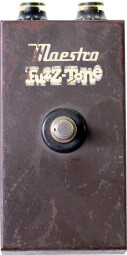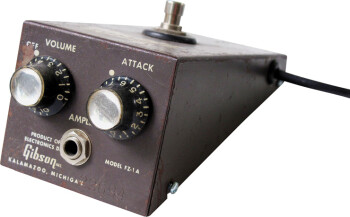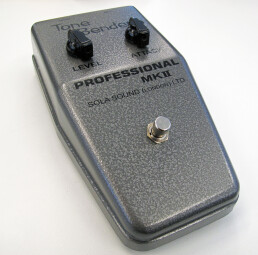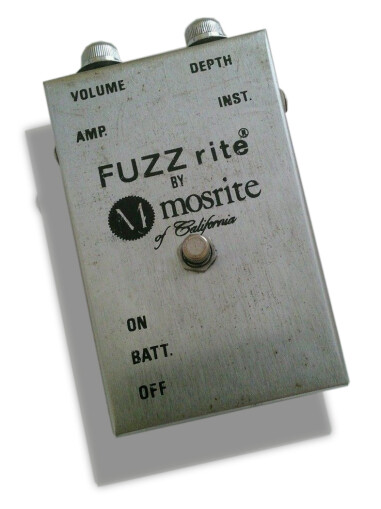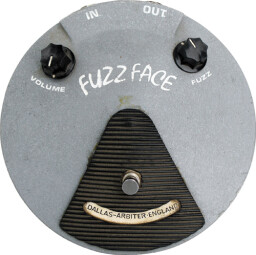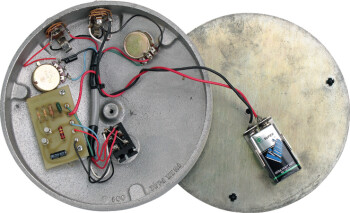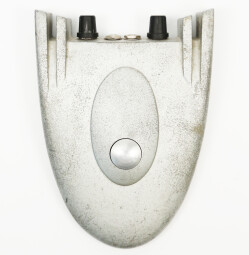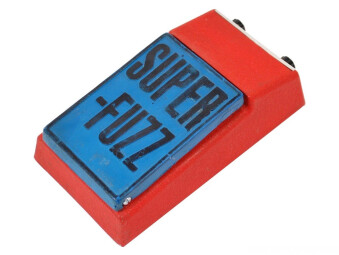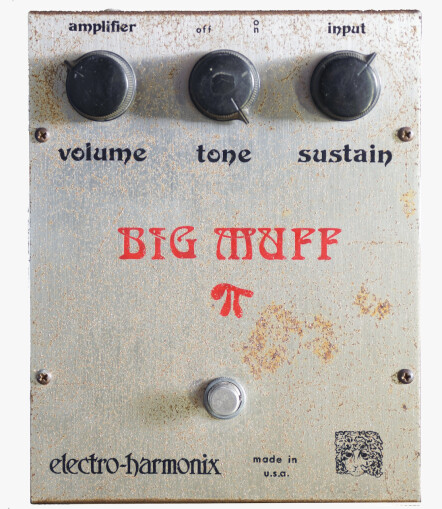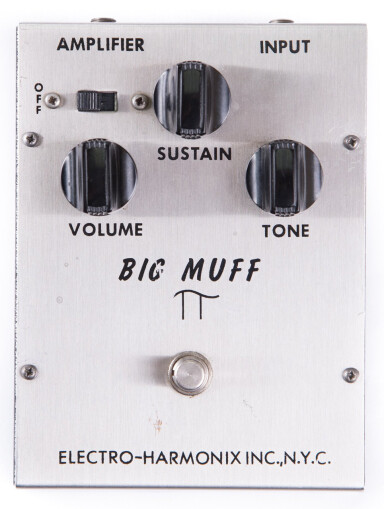Fuzzzzz! This onomatopoeia used to describe the first distorted sounds of an amp is hardly a stranger to any guitar player. The fuzz is obviously a distortion effect, but it's a also a culture in its own right. It actually defines a whole category of rock by itself and symbolizes the desire for emancipation and renewal of an entire generation. Audiofanzine invites you to (re)discover the greatest models that have left a mark in music history.

Breaking the rules (and the amps…)
The fuzz is considered the first ever distortion pedal in the history of guitar. But the quest for a distorted sound is older than this famous machine. At the end of the 1940s several guitar and bass players started to realize that the defects in their tube amps allowed them to get an original sound. Back then, quality and clarity was the norm. Distortion was simply considered an imperfection. However, some musicians on the fringe thought it was interesting and didn’t hesitate to push their amps to the limit to make the tubes distort, and risk their hearing while at it… Take, for instance, Willie Johnson, guitar player of Howlin’ Wolf, who displayed his talents on How many more years (1951) or even Chuck Berry on Maybellene (1955).
Other musicians would also discover by accident that defective tubes and loudspeakers could distort without the need to crank up the volume. Willie Kizart, who worked with Ike Turner, inadvertently used an amp whose speaker cone had been damaged on Rocket 88 (1951). Other guitarists wouldn’t hesitate to take out some tubes or intentionally slash their speakers to get the desired result. These forms of experiments were immortalized on tracks like Johnny Burnette’s The Train Kept A Rollin’ (1956) or Link Wray’s famous Rumble Rumble (recorded in 1958).
While the '50s marked the desire for emancipation from the smooth and mannerly canons in force at the time, it was clearly the '60s that popularized distortion. In 1961, Grady Martin released a song with a distorted and nasal sound and simply called it The Fuzz. It was a real shocker for many musicians! It didn’t take long for many guitar players to start imitating the “fuzz” sound. Four years later, when the first fuizz pedals had already seen the light of day, the Rolling Stones used it on Satisfaction, making it literally go global overnight. The fuzz craze took hold of the entire planet and rock music would never be the same.
Today we’ll discuss seven pedals that laid the foundations for the fuzz sound. Every one is more mythical than the next and they all have been copied gazillions of times.
Maestro FZ1 Fuzztone – 1962
The ancestor. Simply put it’s the first distortion pedal ever mass-produced. It was invented by an audio engineer called Glenn Snoddy. Glenn worked with Grady Martin on the recordings of The Fuzz (1961) and Don’t worry (1961). Excited to use his brand-new mixing console for the first time, Snoddy was somewhat disappointed to hear the strange guitar sound produced by a faulty transformer. But the effect was interesting and Martin and Snoddy decided to keep the takes, and not get the console repaired to exploit its unique distortion. Unfortunately, the console didn’t last long, so Glenn decided to create a machine that could produce the same fuzz sound. Assisted by fellow engineer Revis Hobbs, he tried out lots of transistors (instead of tubes) and ended up inventing a circuit that he immediately offered to Gibson. In 1962, Gibson released the FZ1 Fuzztone under the Maestro brand.
It used three germanium transistors and had two knobs: Volume and Attack (gain, in fact). Do note that the pots it featured were the same as the Les Pauls of the time. The sound was distinctive, twangy and aggressive. Not knowing how to sell the product, Gibson highlighted the possibility to reproduce the sound of brass instruments, a violin and even an organ. It was a flop the first years it was marketed, until a remarkable event occurred… While recording Satisfaction, the Rolling Stones were thinking of having brass instruments play the main riff. That didn’t happen and, maybe seduced by Gibson’s promise, Keith Richards bought a Maestro Fuzz to use it for the recording. That song released in 1965 had a landslide effect and had Gibson sell Fuzztones by the thousands. The cornerstone of a massive building had just been set.
You can hear it on The Rolling Stones – Satisfaction:
Sola Sound Tone Bender – 1965
The Tone Bender is the British equivalent of the Maestro FZ1 Fuzztone. To understand how it came to be, you have to go back to that period in time: US gear was very hard to come by in Europe and the only way to cope with the demand was with locally made alternatives.
Everything started in April 1965 in London’s Macari’s Musical Exchange music shop, when Vic Flick, who had laid down the guitar for the James Bond theme, dropped by with his Fuzztone. Not satisfied with the results, he asked for it to be modified to have more sustain. Gary Hurst, a young electrician, took up the challenge and decided to keep the germanium transistors, but changed the circuit by adding several components and increasing the voltage (form 3 to 9V). The product was good: its sound was less nasal and less dry than the original Fuzztone. The store decided to make several copies and sell them under its own brand, Sola Sound. The Tone Bender – that’s how it would end up being called – would even become one of the first ever effects pedals to feature True Bypass.
Several versions would come out after the Sola Sound Tone Bender was first introduced. Starting with the MK1.5 in 1966, which saw the number of transistors decrease from three to two, but which provided more stability and was cheaper. Several months later, Sola Sound would review it again with the Tone Bender Professional MKII. This would be the definitive version of the effect, and the one that earned it its name. It featured the more reliable architecture of the MK1.5 but added a third transistor to offer more gain and sustain. Like the MK1.5, it was offered as an OEM product to Vox who released it under the Vox Tone Bender Professional MKII moniker.
You can hear it on The Yardbirds – Heart Full Of Soul, The Beatles – Think for yourself.
Mosrite Fuzzrite – 1966
The Mosrite Fuzzrite is certainly less celebrated than the Holy Trinity made up of the Tone Bender, Fuzz Face and Big Muff. Yet, it remains an important model in our collective mind. And its story is very interesting in many regards.
The rumors surrounding its genesis are fascinating. Legend has it that The Ventures wanted an amp that had a built-in fuzz circuit, preferably that of the Red Rhodes. The Red Rhodes was a pioneer among fuzz pedals. Introduced in 1961, it was never mass-produced. It would remain reserved to the artistic world, which would add to its fame. So The Ventures turned to Mosrite, whose guitars they sometimes used, to create the famous amp. The manufacturer took too long and the band gave up on the project.
That could’ve been the end of the story, but around the same time, Mosrite went to the rescue of Leo LeBlanc, who had some reliability issues with his fuzz pedal (apparently a Maestro Fuzztone). The engineers at the company would create a new circuit: the Fuzzrite. They would build it in some amps and also offer it as a pedal. At first, they made only 200 copies of the pedal, but LeBlanc noticed a problem: germanium transistors didn’t withstand low temperatures! A second batch was produced but this time featuring silicon transistors.
You can hear it on: Iron Butterfly – In a gadda da vida
Arbiter Fuzz Face – 1966
Back to England with the Fuzz Face. Its unparalleled allure and the fact that it was used by Jimi Hendrix made it one of the most iconic fuzz pedals in the history of guitar playing. And yet, the Fuzz Face isn’t exactly the most original…
Like many other effects, this pedal was born in a store. Ivor Arbiter, its inventor, had several stores, one of which specialized in drums gear. Open-minded and with a good sense for business, he decided to create his own fuzz pedal for guitar. He developed a circuit largely inspired on the Gibson Maestro FZ1 Fuzztone. It featured only two germanium transistors, but it is specially the similarities with the Sola Sound Tone Bender MK 1.5 which are unsettling. More than one considered it a copy due to this. But the fact is that the Fuzz Face had two solid arguments compared to the rest: it was cheaper and looked good. From Jimi Hendrix to David Gilmour and George Harrison, many major stars all used the Fuzz Face and helped make it a legend.
Between 1968 and 1969, Arbiter merged with the Dallas Musical Instruments Company and the Fuzz Face was renamed as the Dallas Abiter. The pedal underwent several revamps during its life, with constant changes in the transistors used (germanium and silicon).
You can hear it on: Jimi Hendrix – Foxy Lady
Roger Mayer Octavia – 1967
While not the first one to used the fuzz sound, Jimi Hendrix did a lot to make it what it is nowadays. A trailblazer when it came to experimenting with the guitar, he used pedals to bring to life his ravishing sounds. A great Fuzz Face fan, he didn’t hesitate to play with the volume of his guitar to add more expressiveness and nuances to his playing. Besides his talent, he had a good eye for tools, too. That’s how he came to Roger Mayer in 1967. In the early '60s, Roger Mayer worked as an acoustic engineer for British Admiralty, the political and administrative arm of the British marine. In his spare time, he would put together units for “private” clients such as Jimmy Page, Jeff Beck and Big Jim Sullivan. In January 1967, Mayer met Hendrix at a club. Less than a month later, Jimi recorded the solo on Purple Haze with a unit Mayer had created for him: the Octavia.
The Octavia was not a true fuzz pedal. In fact, the first version featuring germanium transistors and a ferrite transformer had a very low gain and Hendrix had to use a supplementary fuzz. The principle behind it had been to produce a sound one octave above the note played by the guitar player. That way the sound was “doubled” and the harmonics exacerbated in the high end. Jimi used the neck pickup and the tone knob set to minimum to keep only the highs produced by the pedal.
As soon as the Purple Haze and Fire recording sessions were over, Mayer decided to include a distortion section in the same housing and kill two birds with one stone. The pedal would keep on evolving, especially to improve its reliability with silicon transistors, but it wouldn’t be marketed by Roger Mayer. The first models to make it to the mass-market were copies by different brands. Some years later, Mayer would finally go into the pedal business and manufacture what he considers the only true Octavia.
You can hear it on: Jimi Hendrix – Purple Haze, Jimi Hendrix – Little Wing
Univox Super Fuzz – 1968
The Univox Super Fuzz followed on the footsteps of the Octavia and generated distortion and an octave above. But it also added an octave below, providing a fuller sound. Univox used a Japanese circuit conceived by the Shin-Ei corporation, whose chief engineer was Fumio Mieda, the father of the Uni-Vibe and several Korg keyboards.
When it came out in 1968, the Super Fuzz embodied years of experimentation that had made the fuzz widen its scope. It featured two germanium diodes and generated two octaves above and below. Instead of the traditional volume and gain knobs, it had a switch which allowed you to scoop the mids to get a thicker sound. Resolutely modern, it didn’t take it long to win the hearts of many musicians, including Pete Townshend.
Univox would disappear in 1985 when its parent company, Unicord Corporation, was bought up by Korg. However, Shi-Ei would continue manufacturing and selling the circuit to several brands, like Aria, Mica, and Bruno. Finally, some other fuzz pedals, like the Ibanez Standard Fuzz, the Fender Blender or even the Roland Bee Baa were largely inspired on the Super Fuzz circuit.
You can hear it on: The Who – Live At Leeds
Electro-Harmonix Big Muff Pi – 1969
The last pedal in our selection of mythical fuzz pedals is none other than the Big Muff Pi, a classic among classics. Conceived by Bob Myer, an electrician who couldn’t play music, and Mike Matthews, who quit his job at IBM to found Electro-Harmonix, the Muff revolutionized guitar distortion. It was much more reliable than most of its predecessors, cheaper and featured an original circuit which gave it a unique sound.
Mike Matthews dreamed about creating a distortion with three knobs which had lots of sustain. With the help of Bob Myer, he created a circuit with four silicon transistors and a tone knob which mixed high-pass and low-pass filters. The Big Muff Pi did away with the acid and nasal sound of the first fuzz pedals. Without resorting to “tricks” like adding additional octaves, it delivered a massive sound, with lots of lows and well-defined notes.
The history of Electro-Harmonix was long and turbulent, and countless versions of the Big Muff saw the light of day, some even under the name Sovtek, during Mike Matthews’ Russian “exile.” The two most memorable were certainly the first two. The original V1 with three knobs in the shape of a triangle. usually referred to as the “Triangle Big Muff.” For its part, V2 featured a ram head, which would eventually become the symbol of EHX. It is usually called the "Big Muff Ram’s Head." David Gilmour was especially fond of this model.
You can hear it on: Pink Floyd – Comfortably Numb

